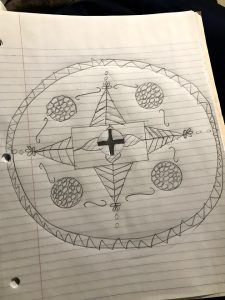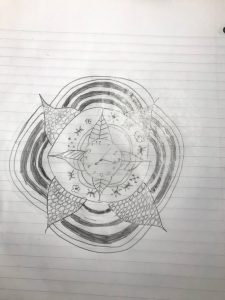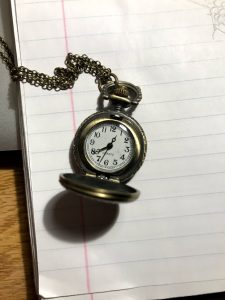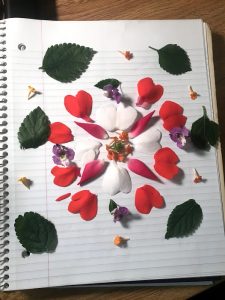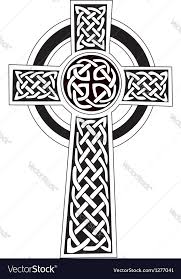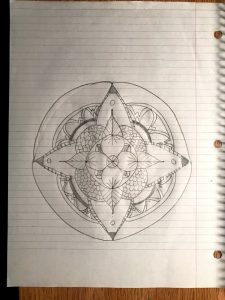As finals are approaching I find myself finishing up the first semester of my college experience. Over the weeks spent here, I was exposed to a variety of new topics in my classes regarding Spanish culture, environmental impacts of energy production, classical philosophical problems and arguments, and of course, FYS 158 Nonviolence: Theory and Practice. During these classes, I was challenged to read, analyze texts, respond, collaborate, present, and produce at a high academic level. The stresses that accompanied this workload were handling in a variety of ways, and one method is part of the workload itself which is my personal project of mandala making.
The mandala I made for my fifth and final entry comes at a time where the bulk of the work is done, but the last challenge is still to come with my final exams, presentations, and paper revisions. This mandala was made in a calm and relaxing moment amid focused classes and times of work and study. I expect to continue to draw mandalas in the future after the personal projects have concluded and I would even entertain the idea of a mandala-themed tattoo. I am also glad for the personal project I have taken because it forced me to think artistically, which is not one of my strong suits. My undertaking of mandalas, in the end, has been a calming de-stressor and a fun and diverse activity with deep cultural ties and I am glad to have partaken in such an activity.
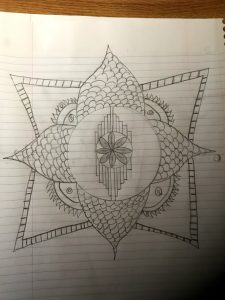
5th Mandala
